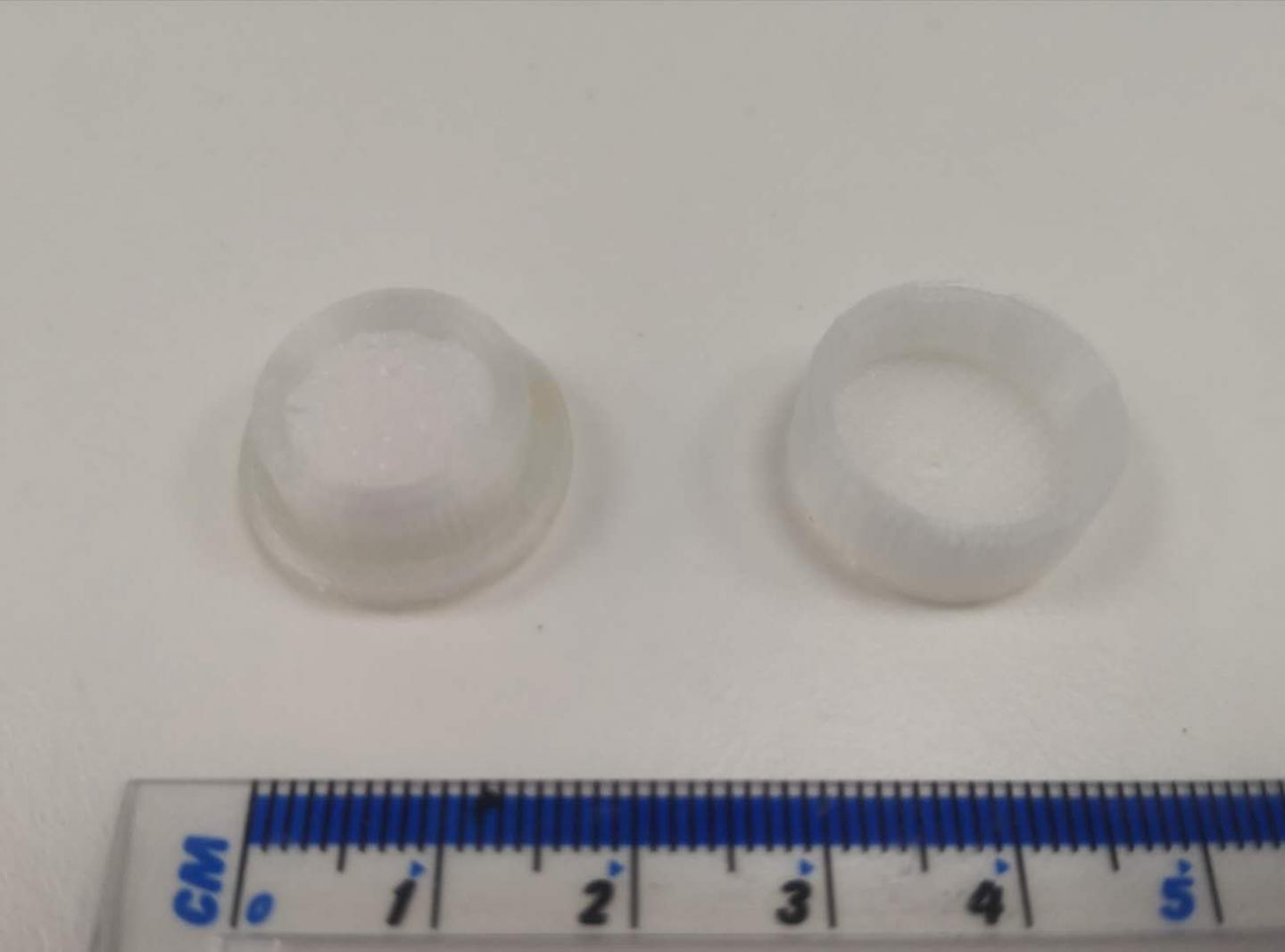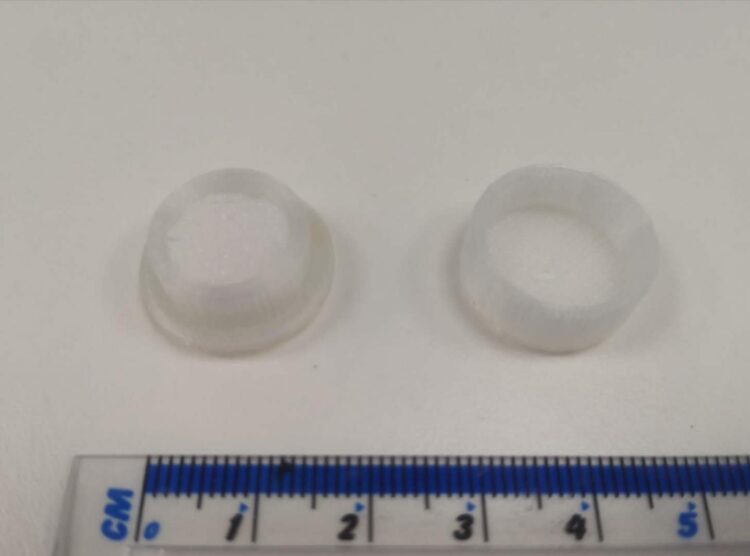
Credit: University of Sussex
Doctors could soon be administering an entire course of treatment for life-threatening conditions with a 3D printed capsule controlled by magnetic fields thanks to advances made by University of Sussex researchers.
Engineers and pharmaceutical scientists from the University of Sussex and The University of Texas at Austin have developed a triggerable and remotely controllable system for on-demand drug delivery.
Using 3D printing technology and magnetic actuation, researchers have been able to prove the concept of a drug release triggered by magnetic fields capable of inhibiting the proliferation of cancer cells in vitro.
While the research is in its initial phases, the researchers are working towards a system where it is possible to drive the drug delivery system towards the required position in the body using external means such as permanent magnets. The technology would allow for a drug to be applied close to the lesion.
The researchers foresee that the targeted delivery offered by the new system could help eliminate harmful side effects caused by treatments like chemotherapy which damage neighbouring healthy cells. The device also offers a level of control that would guard against inappropriate dosing which has become the main cause of adverse effects from drug therapy.
Kejing Shi, doctoral researcher in the University of Sussex’s School of Life Sciences and lead author of the study, said: “The device offers the potential for personalised treatment through the loading of a given drug in a particular concentration and releasing it within different dosage patterns. All results confirmed that the device can provide a safe, long-term, triggerable and reutilizable way for localized disease treatments such as cancer.”
Professor Ali Nokhodchi, head of Pharmaceutics Research Lab at the University of Sussex School of Life Sciences and corresponding author of the article, said: “The device delivers enhanced efficacy and safety through optimal drug distribution and absorption in the targeted location at the (sub)cellular level. This device has the potential to be used in treatments for cancer, diabetes, pain, and myocardial infarction which require variable release kinetics where patients’ suffer from discomfort or inconvenience if they currently rely on untunable monotonic drug treatment.”
In the study, to be published in the August edition of Colloids and Surfaces B: Biointerfaces, a device containing anticancer drug 5-fluorouracil and composed of a magnetic polydimethylsiloxane (PDMS) sponge cylinder and a 3D printed reservoir showed an inhibition effect on Trex cell growth.
Repeated, localised drug release was achieved by switching the applied magnetic field on and off. Varying the intensity of the magnetic field when applied to the device causes the internal magnetic sponge to be compressed at different ratios, which releases different amounts of the drug.
In vitro cell culture studies demonstrated the stronger the magnetic field applied, the higher the drug release and the greater inhibition effects on Trex cell growth.
The researchers say that this kind of smart treatment could be available for patients in hospitals within a decade.
Dr Elizabeth-Rendon Morales, Senior Lecturer in Engineering at the University of Sussex’s School of Engineering and Informatics, said: “Fine tuning and characterizing the device performance allows the system being capable of releasing the drug within different dosage patterns thus, having the potential to offer personalized treatment.”
Dr Rodrigo Aviles-Espinosa, a Lecturer in Biomedical Engineering at the University of Sussex’s School of Engineering and Informatics, says “Advancing this process further, we could create different compartments in the capsule with different sponges or employ other techniques where the macroporous sponge properties can be tailored to hold two or more substances without being mixed which could deliver more complex courses of treatment.”
###
Media Contact
Neil Vowles
[email protected]
Related Journal Article
http://dx.





